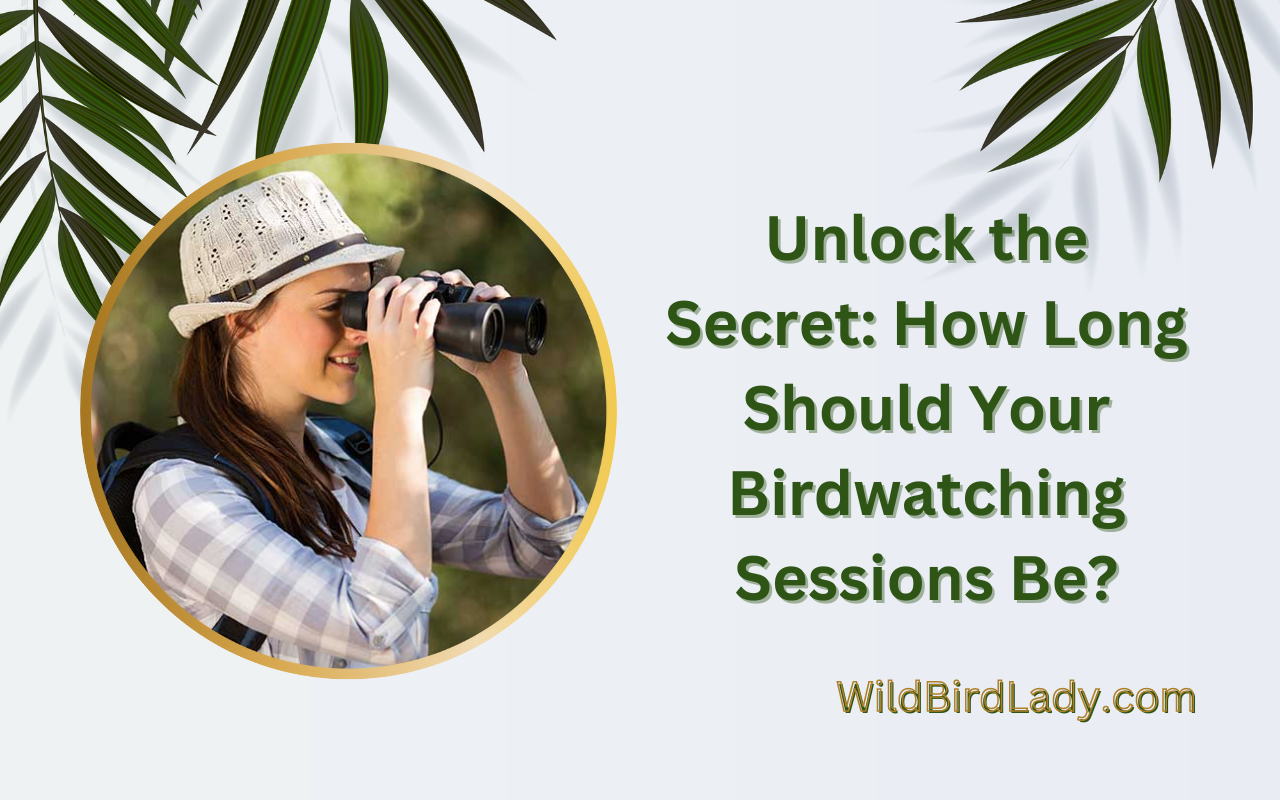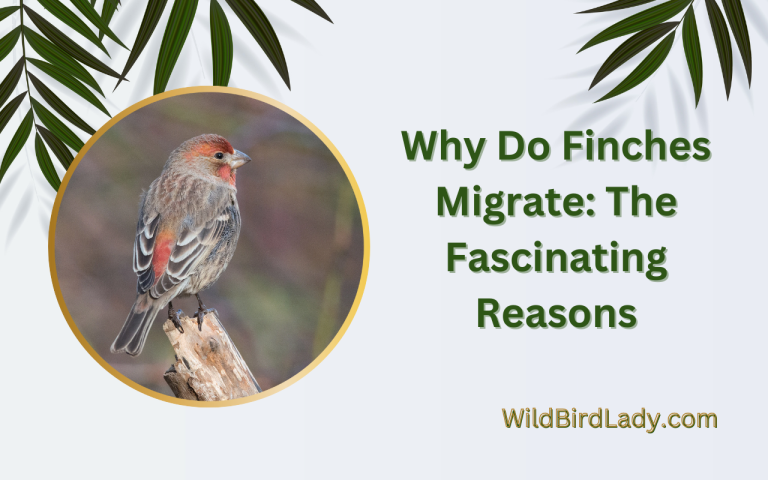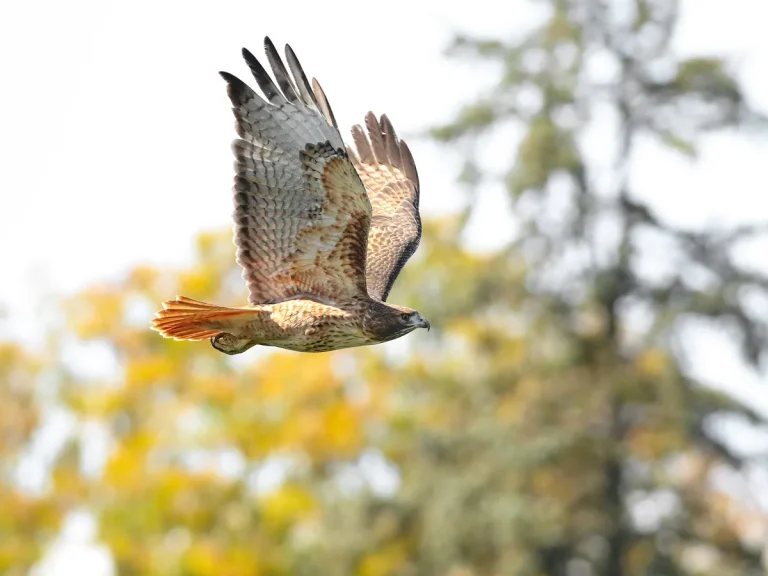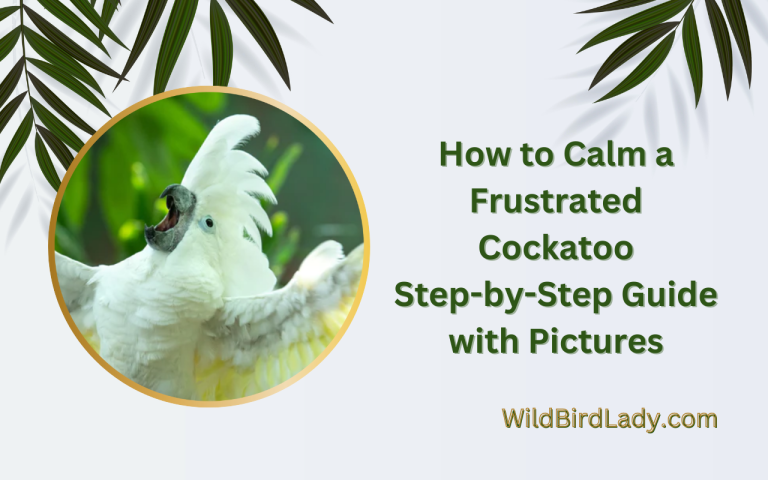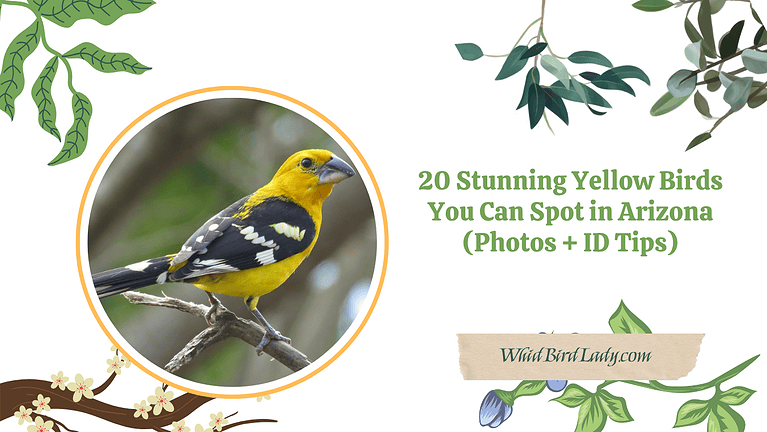Unlock the Secret: How Long Should Your Birdwatching Sessions Be?
A typical birdwatching session usually lasts for 2-3 hours. Birdwatchers can choose to extend or shorten their session depending on their preferences and the availability of birds in the area.
Birdwatching is a popular activity for nature enthusiasts and hobbyists worldwide. It involves observing and identifying birds in their natural habitats, which can be a fun and rewarding experience. The duration of a typical birdwatching session depends on various factors such as the weather, birdwatcher’s skill level, and migratory patterns of birds.
Birdwatchers must be patient and attentive to spot the various species of birds in their natural habitats. In this article, we’ll discuss some essential tips and tricks for a successful birdwatching session to make the most out of your experience.
Credit: rangerrick.org
Why Is Session Duration Important?
For birdwatchers, one of the most common questions is how long should a birdwatching session last? The answer is not as simple as a specific time frame because there are both benefits and drawbacks to shorter and longer birdwatching sessions.
In this section, we’ll examine why session duration is essential to consider before planning your next birding adventure.
Benefits Of Shorter Birdwatching Sessions:
- The shorter sessions are ideal if you are a beginner or someone with a busy schedule.
- You can fit multiple short sessions in one single day, providing greater chances of spotting different bird species.
- Short sessions offer quick and easy access to a local birding spot, which is perfect for spontaneous and impromptu birdwatching.
- The duration itself may give people new to birding a chance to learn the basic techniques and start identifying different bird species.
Drawbacks Of Shorter Birdwatching Sessions:
- The shorter duration may limit the variety of species spotted as birds tend to be most active during particular times of the day.
- You may miss out on viewing certain behaviors, such as courtship, breeding, or migration rituals.
Benefits Of Longer Birdwatching Sessions:
- Longer sessions provide an opportunity to observe the complete behavioral cycles of particular bird species from dawn to dusk.
- There is a higher likelihood of spotting rare or elusive species.
- Longer sessions are ideal for experienced birdwatchers who can identify bird species without much difficulty.
Drawbacks Of Longer Birdwatching Sessions:
- Long sessions can be tiring and may require more planning, such as carrying food, water, and other equipment to sustain you for the entirety of the session.
- Bird habitats can be challenging to traverse, and a long session may lead to exhaustion and physical strain.
When considering the duration of your next birdwatching session, think about your physical abilities, schedule, and goals. Depending on these factors, a shorter or longer session may be more beneficial. Remember, whether it’s a shorter or longer duration, every birdwatching session is a chance to experience the beauty of nature and the exhilaration of spotting a unique species.
Factors To Consider When Determining Session Duration
Key Factors To Consider When Determining Birdwatching Session Duration
Birdwatching is a fascinating activity that can be enjoyed by people of all ages and backgrounds. It allows you to observe different species of birds in their natural habitats and gain a deeper appreciation for their unique behaviors and characteristics.
However, when planning your birdwatching trip, it’s important to consider several factors that can influence the duration of your session. Here are some key factors to keep in mind:
Location
The location of your birdwatching session is one of the most critical factors to consider when determining session duration. Some locations may have a higher concentration of bird species than others, making it easier to spot and observe them. In contrast, other areas may be sparsely populated with birds, which can increase the time it takes to find and view them.
Additionally, some places may be better suited for shorter birdwatching sessions, while others may require longer sessions to fully appreciate all the species in the area.
- Research the location beforehand to determine the types of birds you may encounter.
- Plan your session duration based on the size of the location and the concentration of bird species.
- Consider the time of day when planning your session, as some birds may be more active during certain hours.
Bird Activity
The behavior of birds can significantly impact the duration of your birdwatching session. When birds are actively moving and searching for food, they are more visible and easier to observe. However, if the birds are inactive or resting, it can be more difficult to locate and observe them.
Bird activity can vary depending on the time of day, location, and season, so it’s important to keep these factors in mind when planning your session.
- Schedule your session during the time of day when bird activity is highest.
- Be prepared to adjust your session duration based on the activity level of the birds.
- Consider factors such as mating season or migration patterns when planning your session.
Weather
Weather conditions can have a major impact on bird behavior and thus the duration of your birdwatching session. Certain birds may be more active during specific weather conditions, while others may be less visible or not present at all. Additionally, inclement weather such as rain or high winds can make it more challenging to observe birds.
- Check the weather forecast before planning your session.
- Take into account the temperature, wind speed, and precipitation when determining your session duration.
- Be prepared for changes in weather conditions.
Personal Goals
Ultimately, your personal goals will be a significant factor in determining the duration of your birdwatching session. You may want to observe a particular species or simply enjoy the natural surroundings. Additionally, your level of experience with birdwatching and your physical abilities may impact your session duration.
- Set clear goals for your session before starting.
- Be realistic about your personal limitations and adjust your session accordingly.
- Allow for flexibility in your session duration to accommodate unexpected opportunities or challenges.
As you can see, several factors should be considered when determining the duration of your birdwatching session. By keeping these factors in mind, you can plan a rewarding and enjoyable experience that meets your personal goals and allows you to appreciate the beauty of bird species in their natural habitats.
How To Determine The Optimal Session Duration
Birdwatching can be an incredibly rewarding activity, but determining the optimal session duration can be challenging. The ideal duration for birdwatching depends on various factors, including your skill level, the time of day, the location, and the type of birds you want to observe.
Here are some tips to help you evaluate these factors to find the perfect session length:
Evaluate Your Skill Level And Stamina
- Start with short sessions if you’re a beginner or not very physically fit. Gradually increase the duration as your stamina improves.
- Experienced birdwatchers can handle longer sessions.
Consider The Time Of Day
- Early mornings are the best time for birdwatching as birds are most active during this time.
- Midday is the least active time for birds and is not ideal for birdwatching.
- Late afternoons can be good for birdwatching, as some birds become active again before sunset.
Location Matters
- Near a bird sanctuary, the ideal length of a session can be hours; on a short trail or in a park, you might only need 30 minutes to an hour.
- In an area with few bird species, you might want a shorter session.
- In an area with many bird species, you might want a longer session.
Type Of Birds You Want To Observe
- If you want to observe raptors and other birds of prey that do not move a lot and can be seen from afar, long sessions can be ideal.
- If you’re looking to observe songbirds, which move quickly and hide behind foliage, shorter sessions of 30-60 minutes are ideal for following them as they move through the area.
Evaluating these four factors will help determine the duration of your birdwatching sessions. Remember to always prioritize safety, comfort, and personal preferences when planning your birdwatching activities. Enjoy your time in nature, and happy birdwatching!
How Session Duration Affects Birdwatching Success
Birdwatching is an outdoor activity enjoyed by many enthusiasts worldwide. Whether done solo or with others, it requires patience, attention to detail, and keen observation skills. Nevertheless, one critical factor that determines how successful a birdwatching session can be is its duration.
Finding that perfect timing for your birdwatching is crucial to ensure success. In this post, we will discuss how session duration affects birdwatching success.
The duration of your birdwatching session can affect your ability to spot the desired bird species. Here are some key points to keep in mind:
- Short sessions – if you’re short on time, you can still enjoy birdwatching, but there are some limitations. Short sessions are perfect for observing common bird species. Spending 30 minutes in one location provides enough time to identify and observe various bird species.
- Long sessions – if you want to observe and identify more bird species, plan for long sessions. Experts suggest an hour is enough to spot and identify at least ten bird species. But, if you’re willing to spend over an hour, your chances of identifying rare species of birds will increase.
- Mood and energy levels – your mood and energy levels play a critical role in birdwatching, and they are affected by the duration of your session. Longer sessions may drain your energy, making it much harder to concentrate and spot the specific bird species. It’s essential to take breaks and rest between each session, especially from hours of extended birdwatching.
Factors That Determine The Duration Of Birdwatching
Here are some other factors to consider when deciding how long your birdwatching session will last:
- Weather conditions – weather conditions play a vital role in birdwatching, with many bird species being more active at specific weather patterns. For example, birdwatching under clear sky conditions can make it easier to identify birds who fly high in the sky while cloudy condition may pattern the more high-flying birds.
- Season – different bird species are active during certain seasons. Planning your birdwatching session around the season when the bird species of interest are active will give you a higher probability of spotting them.
- Location – different locations have different bird species. Choosing the right location is essential for an enjoyable birdwatching experience. Choose locations with a more diverse range of bird species that align with your interests.
- Time of the day – some bird species are more active in the early morning or late afternoon. Knowing when the bird species of interest are likely to be active is essential when planning your birdwatching session.
Birdwatching is a great way to appreciate nature while developing your observation and concentration skills. With the right planning and duration for your session, you can enjoy new experiences and discover new bird species, even in familiar locations.
Finding Balance And Maintaining Consistency
Finding Balance And Maintaining Consistency:
Finding the right balance between shorter and longer birdwatching sessions can be difficult, but it is essential to achieving optimal results. Here are some tips on how to find the balance and maintain consistency:
Offer Advice On Finding A Balance Between Shorter And Longer Sessions:
- Start small: Begin with short sessions, perhaps no longer than 30 minutes, to get used to the activity and build up stamina.
- Increase gradually: As you get comfortable, gradually increase the duration of each session, adding five to ten minutes at a time, until you find your sweet spot.
- Mix it up: Vary the length of your sessions to keep things interesting and prevent boredom.
- Set goals: Establishing target species or numbers to see during each session can help motivate you to stay focused and energized.
Discuss The Importance Of Consistent Birdwatching Routines For Optimal Results:
- Build a habit: Consistency is key when it comes to birdwatching. Try to establish a routine that works for you and stick to it.
- Frequency over duration: It is better to have multiple shorter sessions throughout the week than one long session.
- Observation is key: Consistency will allow you to observe patterns in the behavior and movements of birds, enabling you to learn more about them and become a better birder.
- Mental health benefits: Consistent birdwatching can have positive effects on mental health, reducing stress and anxiety levels and promoting relaxation.
By finding balance between shorter and longer sessions, and maintaining consistent birdwatching routines, you will improve results and have a more enjoyable experience in the field. Remember, practice makes perfect, so get out there and start observing!
Frequently Asked Questions Of How Long Does A Typical Birdwatching Session Last?
What Is Bird Watching?
Bird watching is the activity of observing various bird species in their natural habitats. Birdwatchers can enjoy the beauty of birds, learn about their behavior, and contribute to bird conservation efforts.
How Long Does A Typical Birdwatching Session Last?
A typical bird-watching session can last anywhere from 30 minutes to several hours, depending on factors such as the location, the weather, and the types of birds being observed.
What Time Of Day Is Best For Birdwatching?
Early in the morning or late in the afternoon are the best times to go bird watching because that’s when birds are most active. They are busy looking for food during those times.
What Is The Best Season For Bird Watching?
The best season for bird watching depends on the location; however, in general, spring and fall are the best seasons to see a variety of bird species as birds migrate during these times.
What Should I Wear For Birdwatching?
Wear comfortable clothing and sturdy shoes appropriate for the terrain of the bird watching area. Neutral tones like khaki or green are recommended because they are less disruptive to birds. Bring something to cover your head, and apply sunscreen and insect repellent.
Conclusion
Birdwatching is an interesting and rewarding activity that can take you to some of the most beautiful places in the world. As we have seen, the duration of a typical birdwatching session can vary depending on several factors such as the location, weather conditions, and the preferences of the birdwatcher.
Whether you are a beginner or an experienced birder, it is essential to plan your time and be prepared for any eventualities. Remember to carry your binoculars, identification guide, and plenty of water, and always keep an eye out for potential hazards such as extreme weather, rough terrain, or wildlife.
By adhering to these guidelines, you can ensure a safe and enjoyable birdwatching experience that will leave you with lasting memories of the natural world around us. So, grab your gear, and head out to explore what nature has to offer.
Happy birdwatching!
Published on May 29, 2023 | Last Updated on June 28, 2025 by Rifat Ahmed

